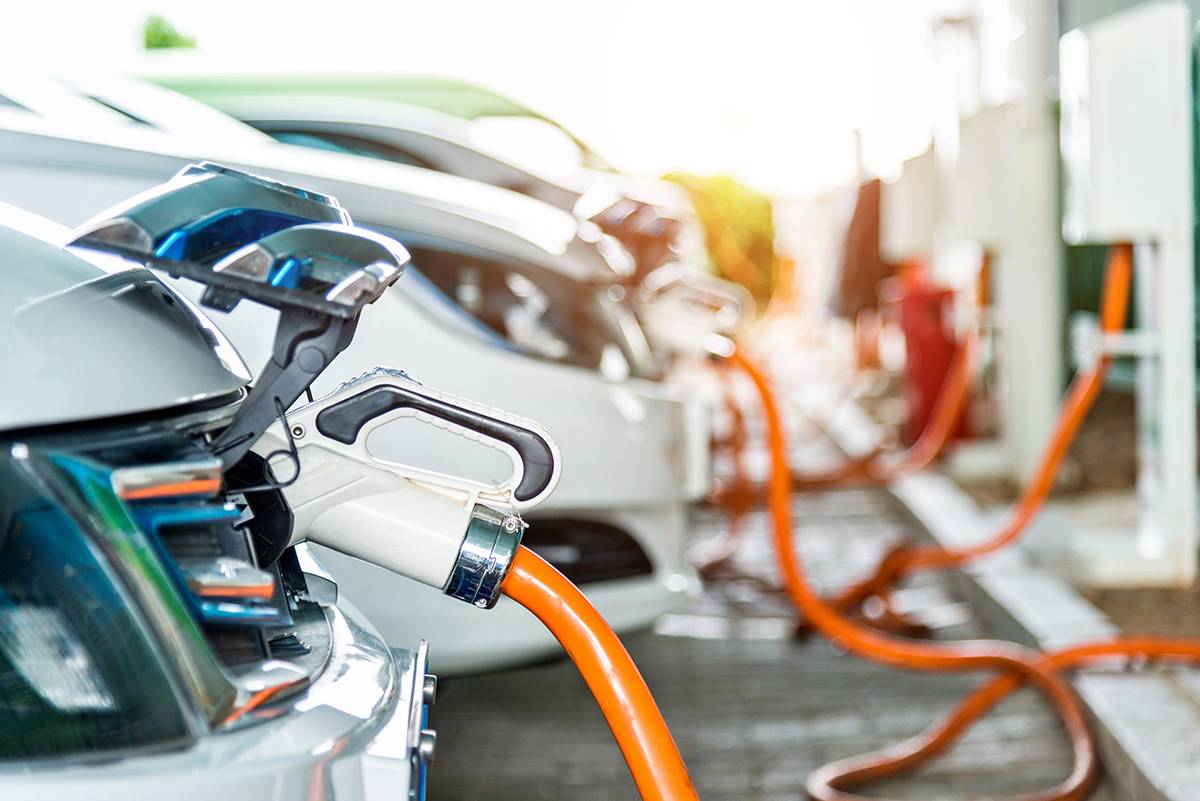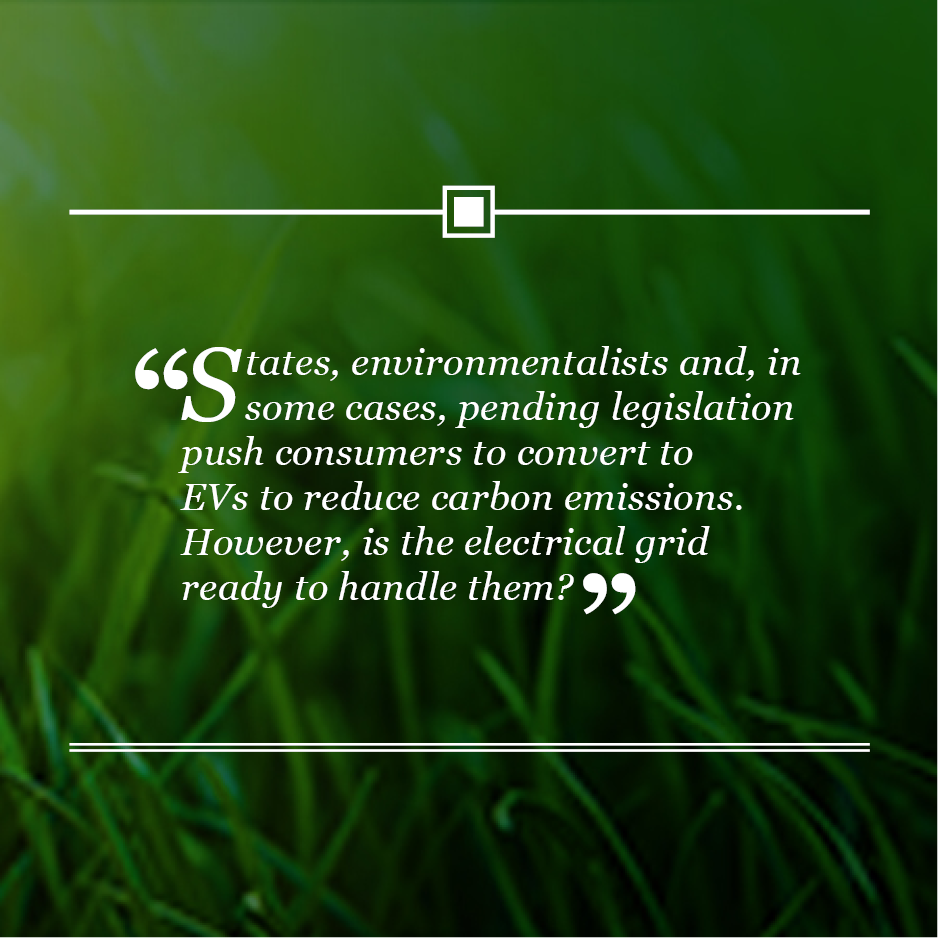 The pandemic hit the economy and utilities hard, reducing electricity demand. However, this demand is forecast to return to projected growth levels later this year. That growth will continue in the coming decades — one reason will be our increasing shift to electric vehicles (EVs). In early December, in a talk hosted by a Berlin-based publisher Axel Springer, Elon Musk projected that the world will need more sustainable energy as EVs, like his Tesla models, become the norm over the next 20 years.
The pandemic hit the economy and utilities hard, reducing electricity demand. However, this demand is forecast to return to projected growth levels later this year. That growth will continue in the coming decades — one reason will be our increasing shift to electric vehicles (EVs). In early December, in a talk hosted by a Berlin-based publisher Axel Springer, Elon Musk projected that the world will need more sustainable energy as EVs, like his Tesla models, become the norm over the next 20 years.
Industry and building systems account for over 90% of global electricity demand today, while transport makes up less than 2%.1 In advanced economies, the increase in digitization and communication helps fuel growth — just look at the rapid growth in e-commerce, teleconferencing and social media over the past several years. In addition, the push to reduce carbon emissions has led to ordinances and modified codes to reduce the use of gas heating in buildings. The move to all-electric homes and commercial buildings is based on the increase in renewable electric generation.2
Global electricity consumption is expected to increase by nearly 50% by 2050.3 While renewable sources are poised to accommodate an increasing percentage of this growth, these systems present their own challenges. The sun and wind are free, but the means of generating and storing power from them are not.
 The materials associated with these renewable systems and the energy storage require the mining of metals and chemicals that present their own environmental issues. Also, a recent study by Western Sydney University’s Benjamin Smith and Lund University’s Zhengyao Lu noted potential concerns in developing large-scale solar photovoltaic farms that are needed to decrease the world’s demand for fossil fuels. Heat reemitted from large farms could have a regional, and potentially global, effect on the climate. While acknowledging the benefits of transitioning from fossil energy, Smith and Lu caution that related responses from the earth’s atmosphere, oceans and land surfaces must be assessed.4
The materials associated with these renewable systems and the energy storage require the mining of metals and chemicals that present their own environmental issues. Also, a recent study by Western Sydney University’s Benjamin Smith and Lund University’s Zhengyao Lu noted potential concerns in developing large-scale solar photovoltaic farms that are needed to decrease the world’s demand for fossil fuels. Heat reemitted from large farms could have a regional, and potentially global, effect on the climate. While acknowledging the benefits of transitioning from fossil energy, Smith and Lu caution that related responses from the earth’s atmosphere, oceans and land surfaces must be assessed.4
But back to Mr. Musk and transportation. While comprising approximately 2% of electricity demand, EVs are expected to account for about 9% of electricity demand by 2050.5 The average electric vehicle requires approximately 30 kilowatt hours to travel 100 miles, comparable to the amount of electricity consumed daily by the average U.S. home. States, environmentalists and, in some cases, pending legislation push consumers to convert to EVs to reduce carbon emissions. However, is the electrical grid ready to handle them?
In lieu of combustion-engine vehicles, EVs simply transfer where the energy is created. Electric cars still depend on an available grid. Much has been written about the condition of America’s electrical grid, and the need to invest in this critical infrastructure is well known.
Some utility companies have started initiatives to enhance grid resilience in their service areas, including “hardening” and “smartening” the grid. In addition, clients providing critical mission services are opting to install microgrids: a small-scale, local energy system that can operate independently. However, significant funding will be required to upgrade the North American power grid for the anticipated growth in electricity demand over the next 30 years.
Meanwhile, states and municipalities are learning that whether EVs become an asset or a liability to the grid mostly depends on when drivers charge their cars. Currently, electricity demand typically peaks in the early evening when people return home, which corresponds with when most drivers charge their vehicles: after returning from work. States and utility companies are using time-of-day rates and “smart charging” — a system that allows vehicles to be plugged in but not charge until they receive a signal from the grid that demand has sufficiently reduced — as an approach to influence behavior.
In addition, many utilities are exploring the potential for electric vehicles to serve as battery storage for the grid. Vehicle-to-grid technology would allow vehicles charging during the day to take on surplus power from renewable energy sources. During peak demand, these electric vehicles could return some of that stored energy to the grid, allowing them to recharge later in the evening. This technology could be extremely beneficial to clients with heavy-duty fleets, such as school buses, that would have substantial battery storage and may be idle for extended periods, such as weekends. Other solutions are being explored, including flexible voltage and power-flow devices to counter potential voltage and thermal overloading problems.
While energy-efficiency initiatives related to commercial buildings and residences will help mitigate the growth in electricity consumption, the demand from EV charging is projected to be the largest contribution of any new source to electricity’s growth. While EV charging represents a small share of overall demand today, it is expected to grow 400% in the U.S. by 2030.6
Accommodating the growth in electric-motor transportation and overall electricity demand —while keeping electricity affordable, generation clean and reliable, distribution systems resilient to disasters and environmental issues mitigated — presents multidiscipline challenges for tomorrow’s engineers. Hanson’s team of energy and transportation engineers are visiting with numerous industry experts and clients, including local governments, departments of transportation and industry and utility companies, to determine the best way to meet these challenges now and in the future. To learn more about our efforts, contact Robert Knoedler at rknoedler@hanson-inc.com.
1 “World Energy Outlook 2019,” International Energy Agency
2 “The Case Against Gas in Our Homes,” Laura Feinstein and Erin de Place, Sightline Institute
3 “International Energy Outlook 2019,” U.S. Energy Information Administration
4 “Solar Panels in the Sahara Could Boost Renewable Energy but Damage the Global Climate – Here’s Why,” Benjamin Smith and Zhengyao Lu, The Conversation
5 “Global Electricity Demand to Increase 57% by 2050,” BloombergNEF
6 “Electricity Demand’s COVID Comeback,” Travis Miller and Andrew Bischof, Morningstar